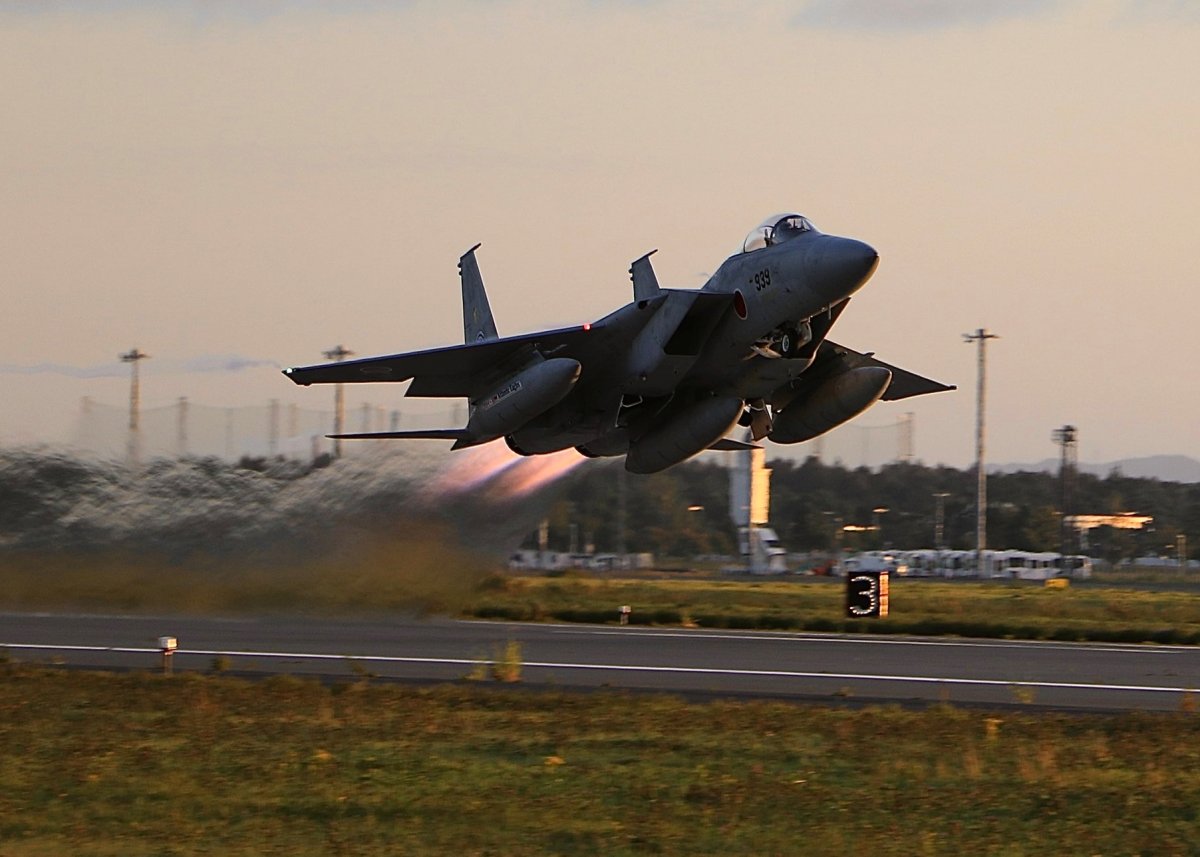Japan—a key United States ally—sent its air force to North America and Europe to strengthen cooperation with NATO amid threats from Russia, China and North Korea.
Newsweek has emailed the Russian and Chinese foreign ministries for comment. North Korea’s embassy in Beijing did not immediately respond to a request for comment.
Why It Matters
Japan views the security of the Euro-Atlantic and the Indo-Pacific as indivisible, citing Russia’s full-scale invasion of Ukraine, China’s attempts to change the status quo by force in disputed Asian waters and North Korea’s development of nuclear missiles.
The deployment of the Japanese air force—its first mission to Europe and Canada—follows the conclusion of a British aircraft carrier’s operations in Northeast Asia.
Moscow, Beijing and Pyongyang, part of an authoritarian bloc known as the “Axis of Upheaval,” strongly oppose NATO’s reach into Asia, accusing the U.S.-led military alliance of inciting a new Cold War that undermines regional security and stability.
What To Know
The Japan Air Self-Defense Force began its deployment, code-named Atlantic Eagles, on Sunday, scheduled to conclude on October 1. Eight aircraft—including four F-15 fighter jets—and 180 personnel, will visit the U.S., Canada, the United Kingdom and Germany.
Photos released by the Japan Air Self-Defense Force on Monday show the fighter jets arriving at their first stop of the deployment—Eielson Air Force Base in Alaska—after departing their home station at Chitose Air Base and flying across the North Pacific.
“[Japan Air Self-Defense Force] will continuously strengthen the cooperation with [U.S. Air Force] to further enhance deterrence and response capabilities of the Japan-U.S. alliance,” the Japan Air Self-Defense Force said on the social media platform X.
Other participating units include two C-2 transport aircraft and two aerial refueling aircraft—the KC-46A and KC-767—deployed from Komaki, Iruma and Miho bases.
After its stop in Alaska, the Japanese detachment will proceed to CFB Goose Bay in Canada, RAF Coningsby and Brize Norton in the U.K. and Germany’s Laage Air Base.
Citing Japan’s Defense Ministry sources, The Asahi Shimbun reported that the F-15 jets would not conduct training events with host nations due to concerns about exercises in unfamiliar territory after a long flight across Asia, North America and Europe.
This deployment was first announced after a meeting between Japanese and British defense ministers in Tokyo last month, at which both sides said they were committed to further strengthening defense capabilities and increasing security cooperation.

A Japanese F-15 fighter jet takes off at Chitose Air Base on September 14, 2025, for a deployment to North America and Europe.
A Japanese F-15 fighter jet takes off at Chitose Air Base on September 14, 2025, for a deployment to North America and Europe.
Japan Air Self-Defense Force
What People Are Saying
Japan’s Defense Minister Gen Nakatani said at a press conference on Friday: “In recent years, Canada, the United Kingdom, Germany, and other European countries have steadily strengthened their involvement in the Indo-Pacific region, such as regularly dispatching fighter jets and warships to the vicinity of Japan, as seen in the recent call of the British aircraft carrier strike group to Japan.”
Japan-U.K. defense ministerial meeting’s joint statement on August 28 read: “The Ministers noted the continuation of our bilateral land exercise, Exercise Vigilant Isles, as a means of enhancing interoperability, and welcomed potential expansion of the exercise to Euro-Atlantic allies and likeminded partners in the near future, beginning with observers this year.”
What Happens Next
It remains to be seen whether Japan will make fighter jet deployments to Europe a regular practice and send its advanced F-35 stealth aircraft overseas in the future.
